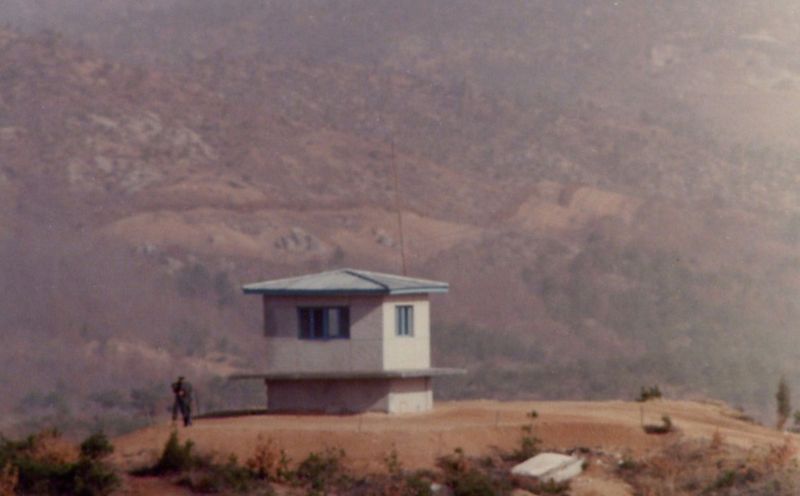
War is good for absolutely nothing, according to musician Edwin Starr. A demilitarized zone, on the other hand, can be great for wildlife.
Along the 38th latitudinal parallel, between concrete-clad South Korea and deforested and impoverished North Korea, the demilitarized zone (DMZ) stands in sharp relief as a verdant refuge for rare plants and animals, reported Al Jazeera and Solutions. The DMZ is a no-man's land guarded by soldiers, artillery, fences, razor wire and landmines. But that also makes it the de facto most heavily guarded nature preserve in the world.
BLOG: South Korean Army Tests Sentry Robots in DMZ
The 160 mile-long (250 km) by 2.5 mile-wide (4km) DMZ's roughly 400 square miles shelter red-crowned cranes, black bears, musk deer, spotted seals, lynx and the rare goat-like Amur goral. The region is also home to nearly 100 species of fish, perhaps 45 types of amphibians and reptiles, and over 1,000 different insect species.
Rumors circulate that Siberian or Amur tigers may prowl the DMZ, reported Al Jazeera, though they disappeared from Korea before World War 2.
War between the two Koreas could destroy the unusual preserve created by the DMZ, and the world is unsure what direction Kim Jong-un will take North Korea as he inherits leadership of the nation from his late father Kim Jung-il.
NEWS: Kim Jong-Il Heir Faces Unsure Future
Sign up for the Live Science daily newsletter now
Get the world’s most fascinating discoveries delivered straight to your inbox.
North Korean press reported that nature was mourning the death of North Korean dictator Kim Jung-il.
“Ice cracked on a famous lake 'so loud, it seemed to shake the Heavens and the Earth,' and a mysterious glow was seen on a revered mountain top,” reported North Korean state news agency KCNA, according to the BBC.
So perhaps the new North Korean leadership will in turn respect the natural world.
On the other side of the 38th parallel, the South Korean government opened the area near the DMZ to hiking. Eco-tourism makes protecting the ecology of the DMZ profitable and peaceful.
“The DMZ which separates North and South Korea is a peaceful place and marks the last untouched cold war border in the world today...The 545 km-long DMZ trek course in nine areas is the road to world peace and wonder of nature,” according to South Korean tourism literature.
The non-govermental organization, DMZ Forum, hopes to formally protect the entire DMZ, even if the two Koreas unify. The organization seeks permission from the North and South Korean governments to obtain UNESCO World Heritage Site classification of the entire DMZ and its adjacent Military Control and Civilian Control Zones (CCZ).
“As resilient as these habitats have proven to be, they can’t sustain this level of development on a broader scale,” said Hall Healy, president of DMZ Forum in the Christian Science Monitor, “We have already lost vast swaths of the CCZ, and the DMZ may not be as amazing without them.”
Successful conservation projects are already taking advantage of the DMZ's potential as a wildlife refuge.
One project protects the winter habitat of more than 1000 white-napped cranes in the Han River estuary and Anbyon Plain of south Korea. Another, also in the Anbyon Plain, protects both white-napped and red-crowned cranes.
The second project built political and cultural bridges as well. It involved collaboration between North and South Korean, as well as Japanese, scientists, reported Al-Jazeera.
This story was provided by Discovery News.











